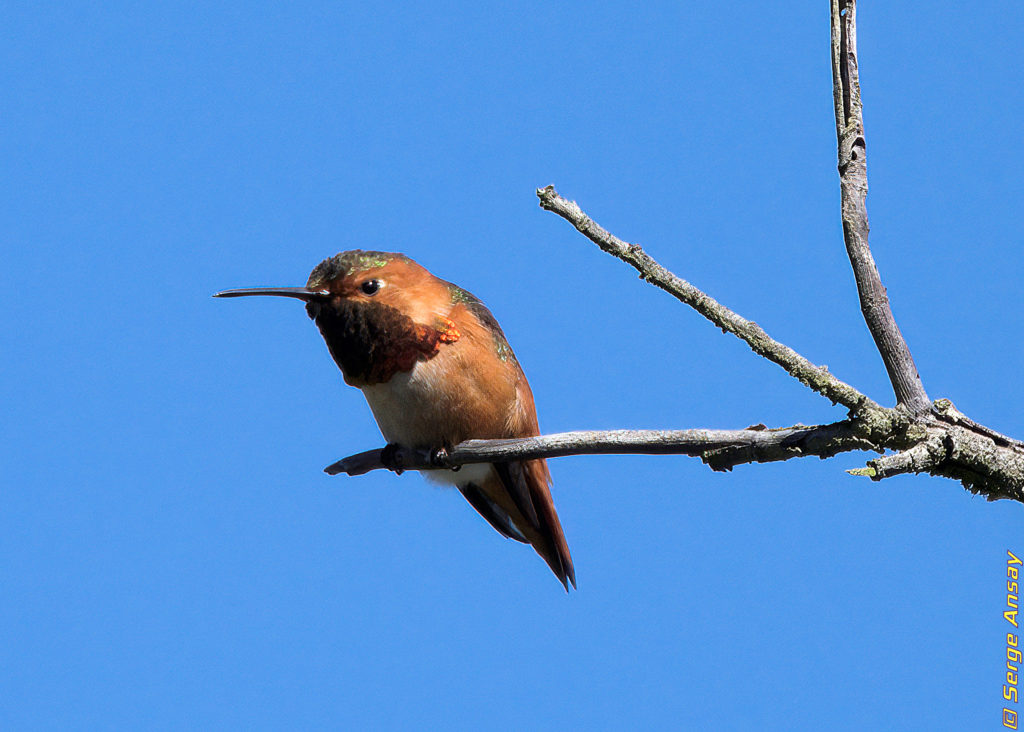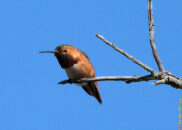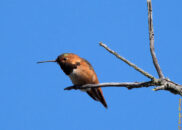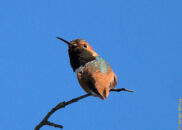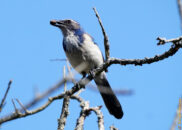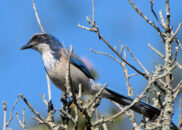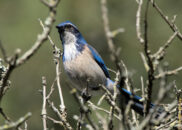It’s been a while since my last post. Well, just a month to be more accurate, and, I want to thank the people who have been wondering what happened. I will only say that some other obligations of life took precedence, and then, I needed a break too. I have a lot of other interests in my life. In particular I just started reading a trilogy which exceeds 1600 pages. One can imagine that takes some time. I know quite a few people who will say that I am crazy, but it’s OK, there is probably some truth in that statement ;-p
Anyway, lets get back to the topic. Today we have these 2 birds, an Allen’s hummingbird and a California scrub jay I saw during a hike with my good friend Shane. These 2 birds were particularly cooperative, staying put so I could take some decent pictures. We also saw a few other birds but, either I couldn’t get close enough or I wasn’t fast enough. And then we got a nice little surprise on our way back. You will see what I mean in the last picture of the gallery.
Allen’s hummingbird is found along the western coastline, with one variant staying in southern California while the other migrates to Mexico for the Winter. The description in Wikipedia leads me to believe the hummingbird I photographed is a male. This hummingbird is named after Charles Andrew Allen, an American collector and taxidermist, who identified in 1879, so 142 years ago.
The Allen’s hummingbird, probably like most hummingbirds, feeds mainly on the nectar of flowers. But it will also eat small insects, sometimes even catching them in flight.
According to this article, the male has a pretty elaborate courtship ritual:
“During courtship, the male rises about 25 feet on either side of a U shape. At the top, he shakes its wings making a high pitched sound. He does this several times. Then majestically, he flies 75 to 100 feet in the air and with a slow spiral dives down.“
After mating the female will build a nest, lay a couple of eggs, brood, and feed the chicks until they are ready to fly out of the nest. So, in essence, she just takes care of everything. Glory to the female hummingbirds! It leaves me wondering, what are the males doing during all that time?
The California scrub jay is one smart bird. That’s the one thing that sticks in my mind from all the things I have read. As explained in the Wikipedia article, it can hide food in over 200 locations, remember where it is, keep a tab on the expiration date (OK, how fast it will decay, if you want to be technical) and, worry so much about others coming to steal it that they will come back and move it somewhere else after a while.
And then it has some social behavior which I have never heard in animals before:
“California scrub jays also summon others to screech over the body of a dead jay, according to new research from the University of California, Davis. The birds’ cacophonous “funerals” can last for up to half an hour“
At least the scrub jay male has a better behavior with the female. He will stick around and even feed her during the incubation period. Like I said, it’s a smart bird, even if he’s not above stealing food from other birds hahaha! Nobody is perfect.
